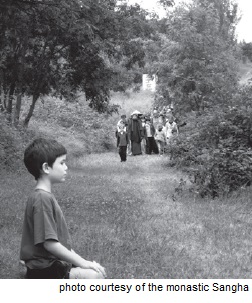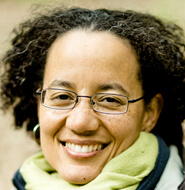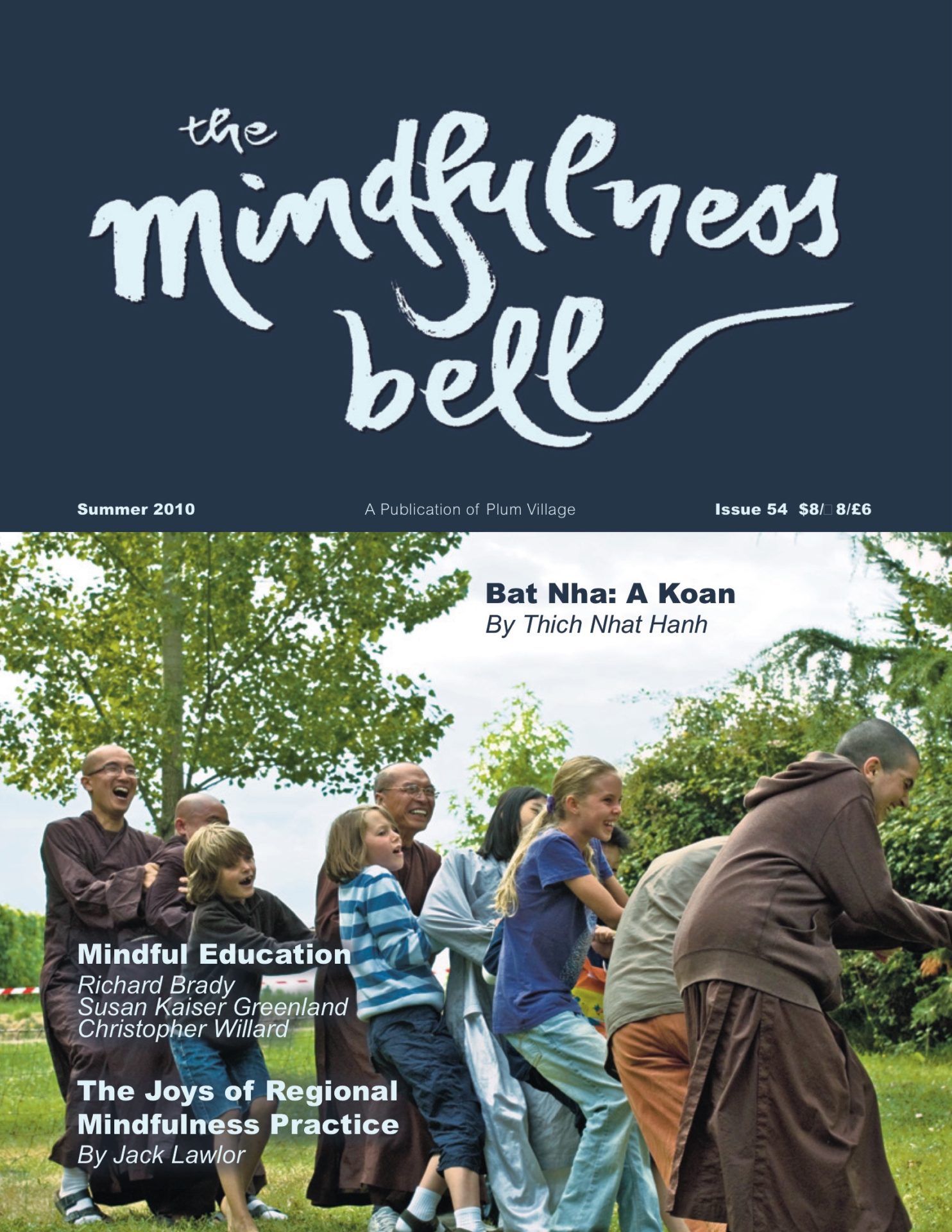By Kaira Jewel Lingo in June 2010

During a retreat in South Africa, for the children’s program, a mother shared an activity. She brought out a large, glass vase filled with water and set it in the middle of the circle of children. Then she set out several containers of colored sand. She explained that the vase was our mind, and the different colors of sand were our thoughts and feelings.
By Kaira Jewel Lingo in June 2010

During a retreat in South Africa, for the children’s program, a mother shared an activity. She brought out a large, glass vase filled with water and set it in the middle of the circle of children. Then she set out several containers of colored sand. She explained that the vase was our mind, and the different colors of sand were our thoughts and feelings.
She asked the children to share what kinds of thoughts they had when waking up. One said she thought about seeing her friends at school, another that he wanted to sleep longer, another that she felt hungry. Each child picked a color of sand that felt right for their feeling or thought, and sprinkled a handful into the vase. As they did, the mother began stirring up the sand.
She asked them what thoughts they had when they got to school, then in the middle of the day, then in the afternoon, and in the evening before bed. The children shared about feelings of joy, sadness, irritation, anger, peace, and sleepiness that arose in them throughout the day. For each feeling, they continued to add their sand to the colorful, swirling water. Then they lay on their tummies, heads cupped in their hands, watching the many-colored sand dancing in the water.
The mother began to stir the sand even faster. She explained, “This is how our minds are when we are in a hurry, stressed, angry or upset. Can you see things clearly in this state? Is it a pleasant state?” The children shook their heads. Then I invited a sound of the bell and she stopped stirring. The children lay there quietly, completely attentive, for several minutes as all the sand slowly settled at the bottom of the jar. Our own inner thoughts and feelings were settling at the same time. We all breathed more deeply and slowly.
She softly explained that this is what happens to our minds when we meditate, when we are mindful of our body and of our breathing. She asked, “What is the water like now?” The children answered, “It’s clear.” “It’s peaceful.” We realized that the thoughts and feelings can still be there in our mind, but resting peacefully, because we know how to return to our breathing and help them calm down.
I have done this activity many times in different environments—in schools, on retreats in the children’s program, and at the beginning of a Dharma talk for children. The kids (including the grown-up ones) really enjoy it. I believe it comes originally from Peaceful Piggy Meditation, by Kerry Lee MacLean.
If you don’t have colored sand, you can also use seeds and grains, but try it out for yourself first because some float on top and don’t sink to the bottom. (Dry sesame seeds float, but if you soak them overnight they should sink). Floating objects can also become an interesting analogy for other mental states—be creative! Once, when sharing the exercise with children at a school in India, I didn’t realize that the colored sand would leach into the water. When I asked the children what they saw when I stopped stirring the sand, they yelled out happily, “It’s pink!” Sometimes, our thoughts and feelings are so strong that even when they settle down, they leave some residue!
But the worst was at our weekly class at the local high school in Waldbrol, Germany. We didn’t have any sand, so we used dirt. When I stopped stirring, we ended up with dark brown, muddy water—that dirt just wasn’t sinking! It wasn’t relaxing at all, and certainly not for me, who had introduced the exercise. It was pretty embarrassing looking into those very puzzled, young faces. And what analogy could you make with that completely clouded water? So dirt is best avoided.
One time, a father carried his two-year-old up to the front of the meditation hall to add a handful of pearl barley to the vase. “I did it!” the toddler exclaimed. I learned later that it was the highlight of the day for the little boy.


